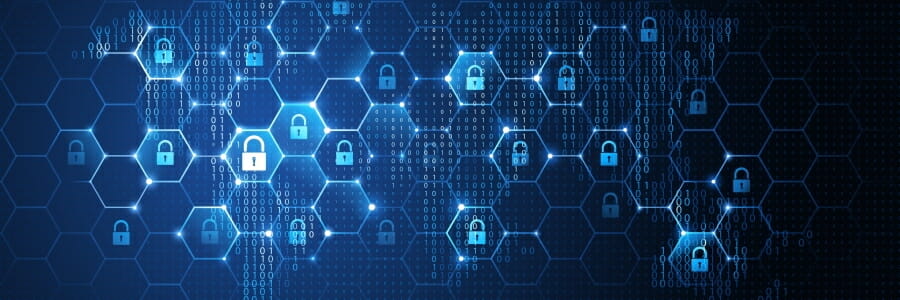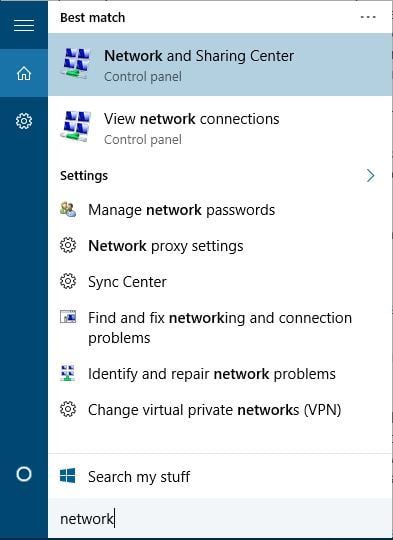How to protect your Windows 10 device on public Wi-Fi
- Although public Wi-Fi networks can be tempting, due to the fact that they're free, using such a network could expose you to various dangers.
- Some of the most common risks of using public Wi-Fi networks are traffic monitoring and data stealing. However, you can prevent all that if you follow a few easy steps.
- Check out our dedicated Wi-Fi section for more Wi-Fi-related guides, fixes, and recommendations.
- Visit our Network & Internet Hub to learn more about keeping your Internet connection in top shape.

Public Wi-Fi networks are usually great, as they provide just about everyone with free access to the Internet.
However, public Wi-Fi networks also have a dark side. Despite the fact that free Wi-Fi is great, it’s not always safe.
For instance, you may encounter malicious users on the same public Wi-Fi network you’re currently using.
These agents can be hazardous to your safety and privacy since most of them are out to get your personal data.
But enough chit-chat, you’re here to discover how to keep safe on public Wi-Fi networks and that’s exactly what we’re going to teach you.
Keep safe your PC on a public Wi-Fi Network
Use a VPN

- Buy a VPN subscription (we recommend PIA)
- Download the VPN client on your device
- Install the VPN client
- Launch it and log in to your account
- Connect to any server you want
- Enjoy private, secure browsing on public Wi-Fi
A VPN does wonders when it comes to protecting your traffic from various agents that would just love snooping around and through it.
Not only does a VPN such as PIA re-route your traffic through its private servers (secure tunnel), but it also encrypts it.
Thus, even if someone would intercept your traffic from inside the public Wi-Fi network, it would all look like gibberish, thanks to encryption.

Private Internet Access
Looking for a reliable VPN to use on public Wi-Fi networks? Private Internet Access is a great choice.Turn off sharing and network discovery

Turning on file sharing and network discovery is not unheard of, especially if you’re on a trusted network.
However, note that this feature should be only used at home/work, or wherever you can trust all the users on the network.
With that in mind, we recommend you only use this feature in safe environments and if it’s absolutely necessary.
It goes without saying that you should never ever use it on public Wi-Fi networks. Therefore, we’re going to teach you how to disable it.
- Press the Win Key on your keyboard
- Type network
- Select Network and Sharing Center
- Click on Change advanced sharing settings.
- Locate your current network profile
- While using a public network, you should always select the Guest or Public profiles
- In the Network discovery section select Turn off network discovery
- Select Turn off file and printer sharing in the File and printer sharing section
- Click Save changes
It goes without saying that turning off network discovery will make other devices unable to see you on the current network.
Enable your firewall

Windows 10 has a built-in firewall, so if you’re not using a third-party solution, you can at least make sure that your Windows one is active.
A firewall’s purpose is to regulate the incoming and outcoming network traffic thus keeping your computer safe from attackers.
This is how you can check if your Windows Firewall is running:
- Press the Win key on your keyboard
- Type firewall
- Choose Windows Defender Firewall from the list
- Click the Turn Windows Firewall on or off button
- Make sure Turn on Windows Firewall is selected in both Private and Public network settings sections
- Click OK to save changes
If you have a third-party firewall installed, Windows Firewall will turn itself off automatically, and there’s no need to enable it.
Always use HTTPS

Whenever you interact with your web browser, you’re sending data that malicious users on the same network could intercept.
If you’re not using a VPN to encrypt your whole traffic, you should at least make sure you’re using an encrypted connection in your browser.
It’s really easy to spot an encrypted connection since it’s marked by HTTPS. HTTPS is an extension of HTTP and it’s used for security purposes.
Of course this doesn’t apply to apps or any other services where you can’t see what’s going on or whether or not your traffic is encrypted.
However, checking the protocol in your browser is a simple and quite effective thing to do to ensure you’re alright.
Expert tip:
SPONSORED
Outdated drivers are the main reason for errors & system issues. If some of your drivers are missing or needs updating, an automated tool like OutByte Driver Updater can solve these problems in just a couple of clicks. Plus, it's also lightweight on your system!
Remember, HTTPS – good, HTTP – bad.
Turn off your Wi-Fi if you’re not using it

Various apps and services maintain connections and make requests in the background, even if you’re not actively using them.
So, to avoid any accidental data leaks, turning off your Wi-Fi when you’re not actively using it turns out to be a wise decision.
Disable automatic Wi-Fi connections
Here’s the thing: over the years, your device got smarter and smarter, and all of a sudden it thinks it could decide everything for you.
One such example is connecting to any public, unsecured Wi-Fi if the signal is strong enough.
Yeah, that saves you just about 2 precious seconds, but it may also connect to a trick hotspot created by a malicious hotspot.
Those are called Hotspot Honeypots. Do you want to know why? Because they make monitoring traffic of unsuspecting victims look like child’s play.
Protect your accounts

There are a lot of reasons why a seasoned hacker or a script kiddie would want to grab your private browsing data.
However, one of the most common reasons is stealing accounts. All of them, if possible; your social media, bank accounts, cloud storage, you name it.
It’s wise to take a step back and consider that these accounts are not exactly fair game. No, they have passwords to protect them.
So what’s the first step you need to take to protect them? That’s right, choose a strong password, one that’s generated automatically if possible.
Can’t remember all the mixed characters and symbols? You could just use a password manager. But wait, there’s more!
In addition to using strong, uncrackable passwords for your accounts, you could also activate multi-factor authentication.
That way, if the attacker manages to get its hands on your password, it will also need an additional confirmation to access your account.
We advise against using your email address as a 2FA for obvious reasons. If the attacker grabs hold of your email address, it basically has access to everything you linked to it.
Update your security software

Whether it’s an antivirus, firewall, anti-malware, anti-ransomware, or all of the above, you need to keep security software in top shape.
They’re responsible for your device’s wellbeing, after all, especially when you’re connected to a public Wi-Fi network.
Just make sure everything is running smoothly by checking for updates every now and then.
Well, you should definitely do that a lot more often than every now and then, but you get the picture.
Conclusion
All things considered, there are several ways to stay protected while using public Wi-Fi networks.
Without a doubt, using a VPN is just about the best way you can go about it.
A VPN will re-route your connection and encrypt your traffic, keeping potential traffic monitoring enthusiasts at bay.
However, if you’re not ready to commit to purchasing a VPN plan, there are plenty of other ways you can tackle public Wi-Fi security.
Still experiencing troubles? Fix them with this tool:
SPONSORED
Some driver-related issues can be solved faster by using a tailored driver solution. If you're still having problems with your drivers, simply install OutByte Driver Updater and get it up and running immediately. Thus, let it update all drivers and fix other PC issues in no time!





